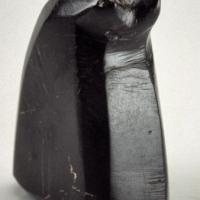
Busted Bishop
Today we will look at a game where the transition from opening to endgame did not go well for one side. White ended up with a busted bishop on b3 with no prospect of activating it due to doubled c-pawns. As a few probably guessed by now, the game that we will look at is from the London Chess Classic 2011, and was played between Short and Kramnik. “Nigel was quite unfortunate because it was just one blunder and all of the sudden he was in big trouble.” Kramnik noted in after the game analysis that the position is pretty drawish before Bg5 calling Be7 a blunder. One blunder out of the opening resulted in a losing endgame. The game shows how careful we have to be heading for an endgame and how careful we have to be of not creating weaknesses in our camp.
So, let us sum up the opening stage of the game. White chose a quiet opening and as a result ended up in an equal position. Given the high class of the tournament without doubt the game seemed headed towards a draw pretty soon. After the natural Bf4 black would trade queens and given that neither side has weaknesses, and the exchanges along the e-file are inevitable the position would be a dead draw. However, something happened here in Short’s mind, I am not sure whether there was a sudden glimpse of a promising position or there was the feeling of prolonging the battle but this something caused the probable misevaluation of the position that happened a few moves later.
With the cunning 12… Qf5 Kramnik set up a trap – not an obvious one for the 2700-rated Short to walk in to. White gave up pawn structure for the possibility to win an exchange. The doubled pawns happened to be around white king which given many pieces still present is a danger. Thus, white went for a significant risk and should have calculated everything precisely in order to emerge ahead in this seemingly not-so-complex position. After the tactical complications black buried the bishop on b3.
Of course Short could have backed up and accepted his position as worse but it did not happen. Retreating the bishop from e7 and then playing with the doubled f- pawns left him some drawing chances. Kramnik in the analysis after the game admitted that it would be hard to win this position. What happened instead is that Short ended up with a bad bishop on b3 – not only bad but horrible. This bishop will never enter the game and black can slowly but surely exchange most of the pieces and play the endgame against the bishop. The game is basically over after d5 but the computer engine insists that black is only tiny bit better.
Regardless of what the engine has to say, Kramnik demonstrated a clear way to a win. First, he traded the rooks, then he activated the king while keeping the dark- squared bishops on the board. The bishops are needed to attack the weaknesses in white’s position. Lastly, Kramnik attacked on the kingside by pushing his pawns forward and conquering space that led to zugzwang motifs. Watching the whole procedure is very educational.
The game reminded me of a classical masterpiece by Capablanca where he buried the opponent’s bishop on g3. Capa is famous for his impeccable endgame technique and watching how he converts the advantage is pure pleasure. Kramnik in the above example played on the kingside where the bishop could not participate in the defense. Capa played on the queenside – the opposite flank to that where the bishop on g3 is. The bishop on d6 might not look better than on g3 for now but in the future after the c4- break it will enter the game and be a decisive piece to win the game.
With the next week's article we will continue exploring the topic of opening - endgame transition.






